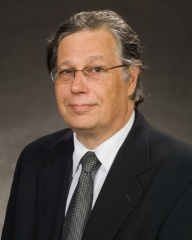
Making kidney function diagnostics easier
How well are each of your kidneys functioning? Are both kidneys pulling their fair share of the work, and does that matter?
By Marg SheridanHow well are each of your kidneys functioning? Are both kidneys pulling their fair share of the work, and does that matter?
It’s not really something most people think about, but if you were planning to donate a kidney or to help your doctors decide between surgery or alternative medical treatments for a diseased kidney the answer to how much kidney function is in each kidney can mean a great deal.
“Most of the time kidneys are 50-50 in terms of their split function,” Dr. Carl Wesolowski explains. “Sometimes having different sized kidneys is just an act of nature – you can be born that way – and you can have a small kidney that’s normal, and a big one that is normal as well.
“(But) sometimes they can function differently because of an illness such as dangerous hypertension, or a kidney containing a malignant tumor or having a urine blockage, for example you can have a kidney stone and the kidney would be prevented from draining urine properly, and if urine builds up in the kidney over time that kidney can stop working.”
Determining how well each kidney is functioning individually, called split renal function, involves injecting a radio pharmaceutical into the patient, and then using a gamma-camera to detect the decay in the pharmaceutical. Using those images, a movie of sorts is compiled that shows where the drug is in the kidneys, which is then used to calculate how each kidney is working.
Carl, and a team of local and international researchers that includes his son Michal, have recently found a more simple method to determine the split renal function of a patient and have recently had their research published in the March issue of the European Journal of Nuclear Medicine and Molecular Imaging. And reaction from the scientific community has been swift: the work has already been the subject of an editorial, several follow up presentations, and has been included in the Basic Physics of Nuclear Medicine/Dynamic Studies in Nuclear Medicine online textbook.
“The most popular method is probably not the best method, because the best method is hard to use,” Carl explained. “Our method is simpler than the most popular method used while giving results similar to the best method.”
One of the things that their new imaging method does is allows the doctor to acquire images that are more tailored to the patient’s diagnostic needs.
“We don’t actually do guess work, what we do is a simple plot,” Carl explained.
“We take the activity over a short period of time, and then we plot the activity in each of the kidney against the activity in the liver,” Michal continued. “Using this number we can extrapolate kidney activity to a point at which there were zero counts in the liver - so the zero counts show the amount of kidney activity that is only from kidney drug extraction, that is, kidney function.”
And while it may sound complicated to the layman, Carl stressed that it’s a simple-enough method that most technologists and physicians can understand the process without much translation – especially considering it’s quite visual in that all of the information they need to know is quite neatly provided within the imaging area.
“Inside the region of interest we have a number of counts,” Michal explained. “So we plot the number of counts versus time, which shows you the activity from that radionuclide as a function of time which gives us graphs.”
The same process is used with the liver, which means that instead of looking at a single image they’re able to look at a series of images that can plot the nuclide activity over time. They then use that information to create another plot that compares the activity in the kidneys to the activity in the liver.
“So basically we’re looking at pure kidney function, while subtracting the liver and background areas,” Michal said.
The idea isn’t a new one to Carl - it’s something that he’d come up with in the 1980’s but hadn’t followed through on until more recently when, at an international conference, the need for a better way of determining split function was brought up.
The ability to differentiate the kidney function from the background activity using this new imaging system can then make accurately determining split kidney function simpler for physicians and technologists, and the research is the culmination of work done in collaboration with researchers from both the United States and Europe, as well as the inclusion of a CoM medical resident.
“It’s really the culmination of a lot of people coming together, doing some really good work.”
